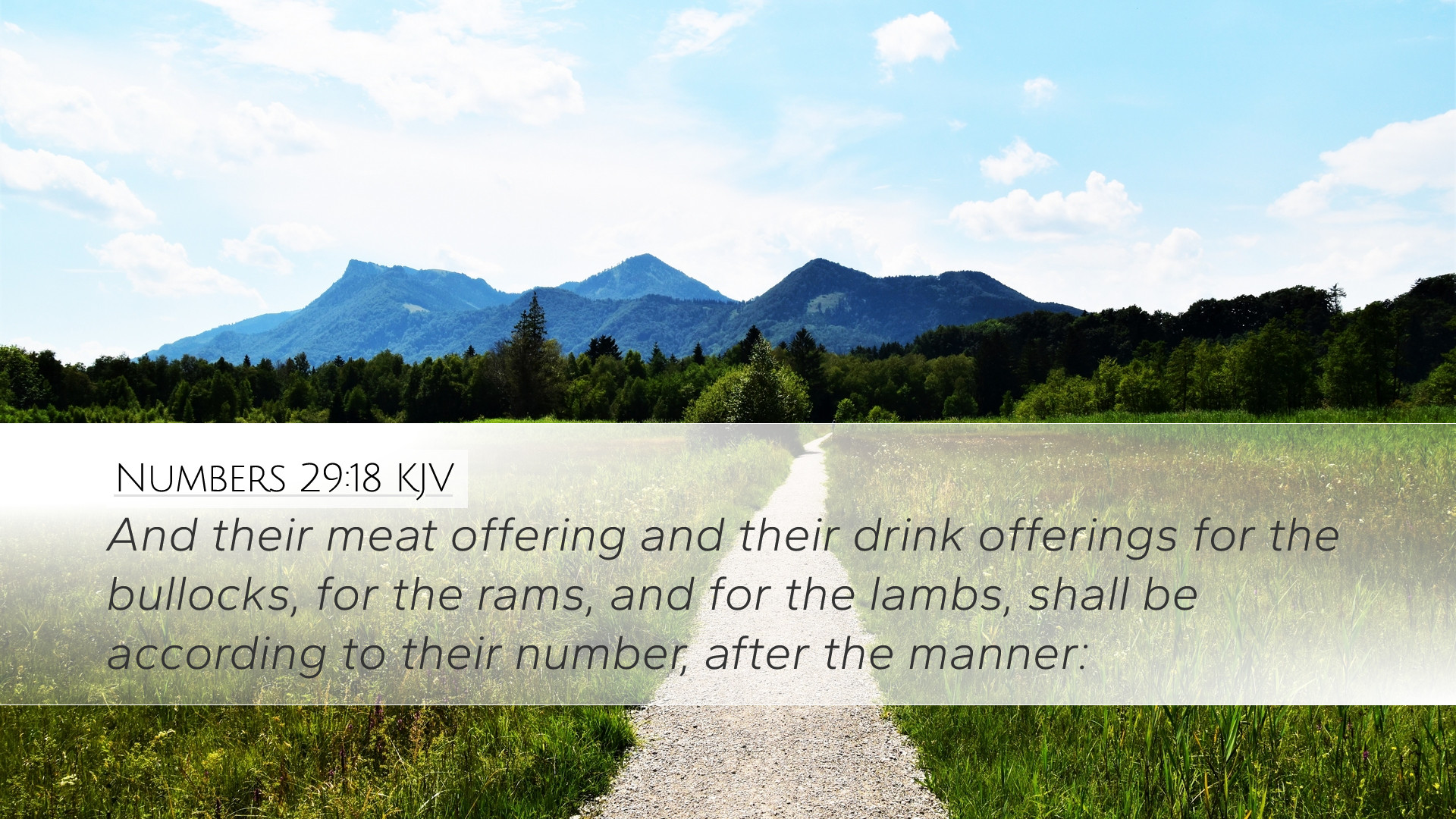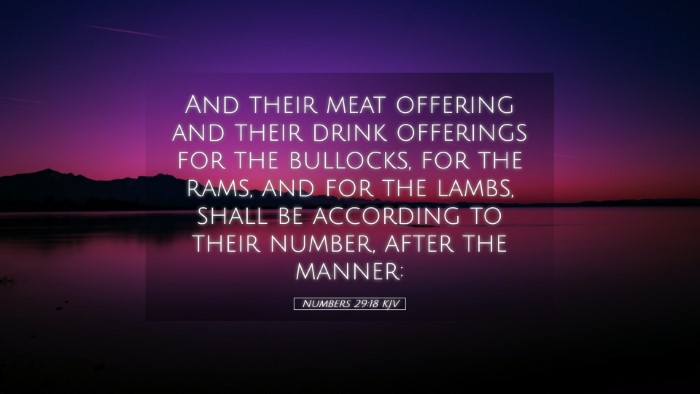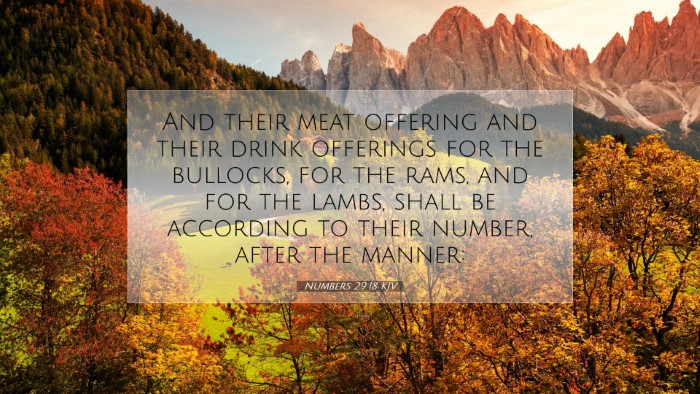Commentary on Numbers 29:18
Numbers 29:18 states: "And their meat offering shall be of flour mingled with oil, and the drink offering thereof shall be wine, the fourth part of an hin." This verse is part of the detailed instructions given to the Israelites concerning the offerings to be made during the Feast of Tabernacles, a significant occasion in the Jewish calendar. Below, we explore insights from various public domain commentaries to glean a deeper understanding of this text.
Overview of the Context
In the book of Numbers, Chapter 29, God outlines the various offerings to be made on holy days. The Feast of Tabernacles, also known as the Feast of Ingathering, marks the end of the agricultural year and serves as a moment of thanksgiving for the bountiful harvest. The instructions emphasize the systematic nature of worship and the necessary components of offerings.
Insights from Matthew Henry
Matthew Henry emphasizes the principle of preparation and the sacredness of offerings. He notes that these offerings must not only be made but must also be prepared with care:
- Meat Offering: Henry highlights that the meat offering (or grain offering) consisted of flour mingled with oil, representing the necessity of bringing the best to God. The flour signifies our labor and resources, and oil symbolizes the Holy Spirit.
- Drink Offering: The wine offering, described as the fourth part of an hin, signifies joy and celebration before the Lord. It demonstrates that worship should be an act of celebration, highlighting God's provision.
- Covenantal Significance: These offerings reflect Israel's covenant relationship with God. They serve as tangible expressions of gratitude and dependency on God for sustenance.
Insights from Albert Barnes
Albert Barnes offers a detailed exposition that expands on the ritualistic aspects of the offerings:
- Specification of Ingredients: Barnes points out the specific ingredients—flour and oil—remind Israel of the agricultural blessings provided by God. Flour being mingled with oil shows a proper approach to worship, where the fruit of one’s labor is complemented by divine assistance.
- Symbolism of Wine: The drink offering, a fourth part of an hin, represents thanksgiving and joy. It is an acknowledgment of the blessings received.
- Public Worship: The communal aspect of these offerings is significant; they represent the corporate nature of worship in Israel, where all partake in the gratitude due to God.
Insights from Adam Clarke
Adam Clarke, known for his thorough historical context, provides insight into the traditions surrounding these offerings:
- Historical Practices: Clarke points to the ancient customs of sacrifices and offerings, suggesting that these were not only acts of worship but also a way of sustaining communal identity and reliance on God.
- Integrating Worship and Agriculture: He underscores the connection between the agricultural cycle and worship, asserting that the Feast of Tabernacles was both a celebration of the harvest and a profound act of faith in God's provision.
- Understanding ‘Hin’: Clarke clarifies the measurement of ‘hin’—a term that would have been understood by the Israelites—and emphasizes the significance of quantities in the offerings, illustrating the precise nature God desires in worship.
Theological Implications
The theological implications of Numbers 29:18 extend beyond ancient rituals to foundational aspects of worship:
- God's Holiness: The meticulous details in the offerings underscore God's holiness. Pastors and theologians can explore how this reflects the necessity for reverence in worship today.
- Worship as Community: The corporate nature of these offerings encourages modern congregations to emphasize community in worship. Collective worship is more responsive and inclusive, mirroring the original intent of these offerings.
- Celebration of God’s Goodness: Contemporary applications of the joy represented in the drink offering can be explored. How is joy expressed within our times of worship, and how does this reflect gratitude for God’s provision?
Practical Applications for Pastors and Scholars
This verse and its accompanying commentary provide practical applications for pastors and scholars:
- Teaching on Offerings: Pastors may utilize this information when teaching about offerings in the New Testament context, demonstrating continuity in God’s expectation of worship.
- Encouraging Joy in Worship: As scholars explore this text, there is ample opportunity to discuss how contemporary worship can embody the joy and gratitude outlined in these ancient practices.
- Research into Rituals: Scholars may consider how the ritualistic elements of these offerings can inform modern liturgical practices, fostering a deeper connection to ancient traditions.
Conclusion
Numbers 29:18 encapsulates a moment of significance in the Israelites' covenant with God, illustrating principles that are vital for contemporary worship. By drawing upon rich historical insights from commentaries by Matthew Henry, Albert Barnes, and Adam Clarke, we gain a layered understanding of the structures of worship and their relevance today. The call to prepare offerings of gratitude remains paramount, as does the invitation to worship joyfully, reflecting the generous nature of God.


